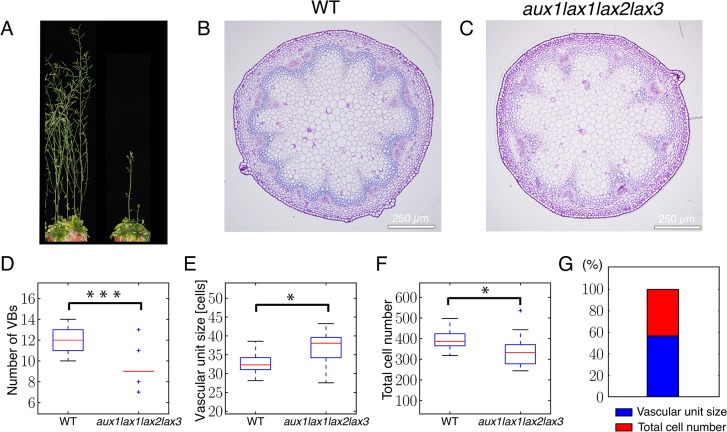Fig 2. Auxin influx carrier quadruple mutants show fewer vascular bundles in the inflorescence stem due to an increased spacing of vascular bundles and to a decreased number of cells in the provascular ring.
(A) WT 14-week-old plant (left) and aux1lax1lax2lax3 quadruple mutant 14-week-old plant. (B) Basal shoot cross section of WT shoot inflorescence stem. (C) Basal shoot cross section of aux1lax1lax2lax3 quadruple mutant shoot inflorescence stem. (D-F) Boxplots of VB number (D), vascular unit size (E), and total cell number across the provascular ring (F) for WT and aux1lax1lax2lax3 mutant vascular rings. For the total cell number quantification along the shoot stem section, the ring of cells formed by the interfascicular fiber cells and the procambial cells within the vascular bundle were taken into account. The vascular unit size measures the spacing of VBs position and was defined as the number of procambial cells along the ring within a VB plus the number of interfascicular fiber cells up to the next VB in this ring. Note that the vascular unit size is enlarged in influx mutant plants, being consistent with the theoretical predictions shown in Fig 1. (G) Percentage of expected contribution of VB spacing (red) and total cell number (blue) to the change in VB number in the aux1lax1lax2lax3 mutant, computed by using Eq 2. All plants were grown under short day conditions. In panels D-G, n = 24 for Col-0 and n = 18 for quadruple mutant plants. Scale bars: 250 μm. *: p-value≤ 0.01; ***: p-value≤ 0.0001.

